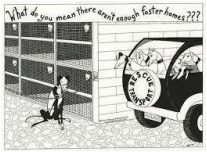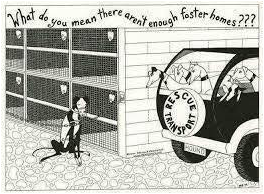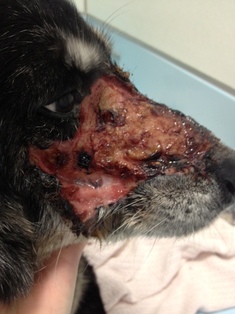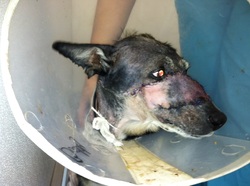
WHY FOSTER A DOG?
“Fostering a dog is not a lifetime commitment, it is a commitment to saving a life.”
This is the watchword of rescue groups everywhere.
To foster a dog is, quite simply, to save that dog’s life. A foster home provides that same dog with a safe, temporary place of refuge until he is ultimately placed in a permanent, adoptive home.
Most rescues rely solely on a network of dedicated, volunteer foster homes, and could not survive without them. And rescues NEVER have enough foster homes.
Why? Because there are more dogs in need than there are foster homes available to meet that need.
There are many benefits to fostering, many pleasant surprises and many unexpected rewards. Foster parents, past and present, describe it as one of the most memorable and gratifying experiences of their lives.
Fostering is both a way of enriching the lives of the dogs and people involved, and a constructive way for people to give back to their communities. Fostered dogs can provide hours of entertainment and love for their humans, and provide valuable life lessons for adults and children alike.
By taking a deserving dog into their homes, fosters increase that dog’s chances of being adopted. Foster families have the time and the ability to transform their foster dog, through one-on-one contact, exercise and training, into a pet any person or family would be proud to call their own.
Fostering provides a needy dog with a stable environment, coupled with love, attention and affection. While the foster family provides the food, the rescue usually provides everything else, including payment of all medical costs to ensure the dog’s ongoing health and wellbeing.
Fosters are the essential eyes and ears of rescue. By spending every day with their foster dog, fosters will learn all they can about his particular personality. They will be able to identify any behavioral issues that need to be addressed, then work on addressing them.
If fosters already have a dog – either their own or another foster -- in residence, all the better. The more animals their foster dog meets, the more socialized he will become, the more easily he will handle stress, and the more relaxed he will be around strangers. And it’s a simple matter to add another warm, furry body to their own dog’s daily walks, meal and potty schedules.
For those who have never owned a dog, fostering provides them with the unique
opportunity of seeing if they themselves are suited for permanent pet parenthood.
But fostering a dog is NOT a form of trial adoption for that particular dog. There is even a term for it: foster failure. The most successful fosters are those who, despite being emotionally invested, know that they are a stepping stone towards their foster dog’s future. And that as one successfully fostered dog leaves their home, another needy and deserving dog is waiting to enter it.
Ultimately, then, fostering a dog saves not just one life, but two.









 RSS Feed
RSS Feed
